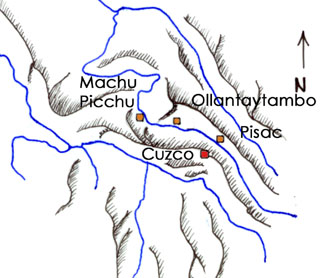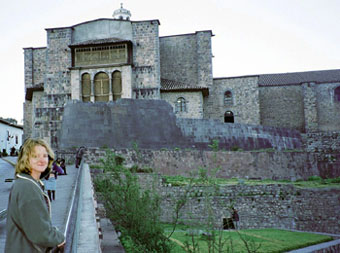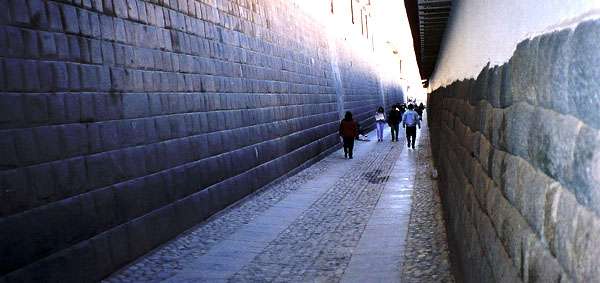|
|
| Cuzco |
|
| The city of Cuzco was the religious and administrative
heart of the Inca Empire and today is the oldest continuously inhabited
city in the Americas. Inca Cuzco was not
the largest city in the Empire, but being the heart of the empire, it
retained a holy status as the home of the ruling Incas.
|

|
|
|
| The first Spanish
to see Cuzco arrived in early 1533 but stayed only briefly. Pizzaro
entered the city on November 8, 1533 as an ally to Huascar who was one
of two brothers waging civil war for control of the Empire.
Huascar was captured and killed by Atawallpa, who was later captured,
ransomed, and killed by the Spanish. They installed Manco
II as Inca, but he was in essence a prisoner of the Spanish. He escaped and on May 6, 1536
launched a siege of Cuzco that did not defeat the Spanish but did burn
the city entirely. Manco II was eventually defeated and during the many
years of Spanish occupation the Inca architecture of the city was
largely destroyed or dismantled to build new structures. Up until the
1930s the fortress above the city of Sacsaywaman was used as a quarry
for stones used in new construction.
|
|
|
| The colonial church of Santo
Domingo is built on a base of Inca stonework. Coricancha, or
"Golden Courtyard" was one of the richest temples in Cuzco. The
perfectly fitted, smooth blocks of the curving wall in front of the church
represent some of the finest Inca stonework in Cuzco.
|

|
|
|
|
|

|
| In the photo above
the wall on the left was likely built by the Inca. The regular ashlar
stones decrease in size as they go up and the wall is angled inward. The wall on the
right is probably from after the Spanish conquest. The stones do not
diminish in size and the wall is plumb. |
|
|
|
Bibliography |
Home |
 Cuzco
2 Cuzco
2 |
|